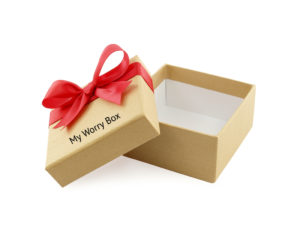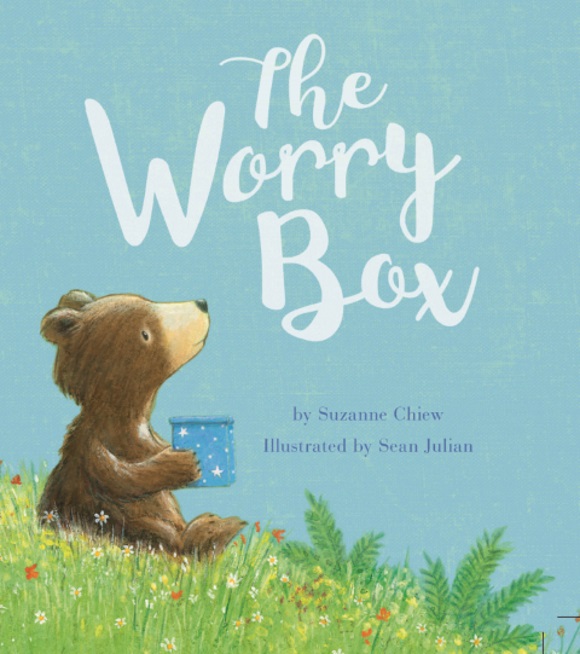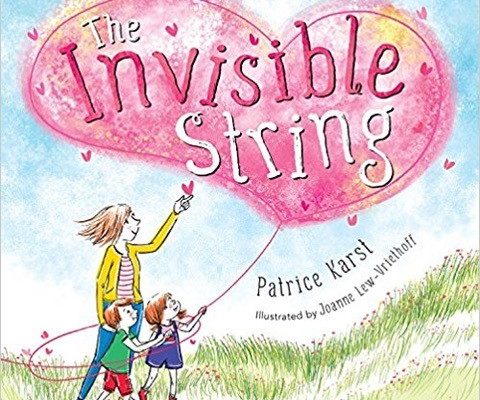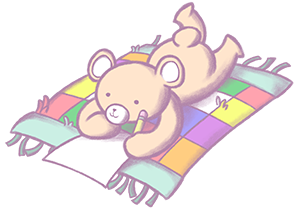Image Courtesy of Tiger Tales Books.
Comforting Anxious Children’s Soothing Story #5
By Janis D. Gioia, MAEd.
Anxious kids worry.
Usually quite a bit and often before bed, which makes bedtime, worry time.
They have little worries, big worries, and in-between worries.
For something that they can’t see, feel, hear or touch, worries take up a lot of space.
Sometimes an analogy helps.

Let children know that their minds are a lot like gardens.
Happy thoughts are flowers, filling their mind with peace and happiness.
Worries are negative thoughts, like weeds, that thread their way among the flowers making it hard for the flowers to bloom.
Like a good gardener, kids need to tend to their minds.
Gardeners pull weeds and put them in the trash.
Where can children put their worries?
A safe place for storing worries.
Having a worry box, or a special place to contain them, is especially helpful.
A nice way to introduce the concept of a worry box is by reading your child a soothing story about a little bear who, just like them, worries quite a bit.
In her gentle picture book, The Worry Box, Suzanne Chiew tells the story of Murray Bear who has a big worry: he is afraid to go with his sister Molly to meet their friend Oliver, by a waterfall.
Murray worries that the waterfall will be too loud or that it might sweep him away.
Molly validates his fears by saying that while “Waterfalls are big and loud…they are also beautiful.”
Always validate children’s fears.
“Sharing worries always makes them feel smaller,” Molly advises as she shows Murray her worry box and assists him in making a worry box of his own.
The worry box gives Murray the courage to face his fears and the bears set off to meet their friend Oliver.
With soft, soothing illustrations by Sean Julian, readers follow Murray on his adventure, through the tall grass, along the riverbank, past dancing dragonflies, feeling a sense of relief when he finally arrives at the waterfall.
Suddenly worries make his tummy tight.
Murray remembers his worry box. After quickly writing his worries on slips of paper he tucks them safely into his container.
At the waterfall, Murray, Molly and Oliver meet Oliver’s friend, Lily.
When Lily is afraid to walk home in the dark Murray echoes his sister by telling Lily, “Sharing worries makes them feel smaller and not as scary.”
Murray invites Lily to her to put her worries into his worry box. With Murray by her side and her worries confined in his box, she happily returns home.
Children need to know that worries are normal and natural.
Everyone worries, children and adults.
Sharing the worries with a trusted grown-up or a special friend makes their heaviness seem a lot lighter.
Teece Nowell, MS, LCPC, BCPC, a mental health practitioner specializing in children and their families in Maryland says, “If a child feels “connected” often they don’t need to worry. It is the feeling of isolation that causes anxiety so the key is connection.”
Author Suzanne Chiew shares, “I was a worrier as a child, and probably still am as an adult. But as I got older, I discovered that I wasn’t alone. I saw that other people carried anxieties and concerns with them – and very often their worries were the same as mine.”
“I gradually learned how to talk about the things that made me anxious,” she continues. “I found it reassuring to know that I wasn’t the only person to fret about things. I discovered strength in watching how other people coped in stressful situations, and how I could use their tools to help me manage my own worries.”
Remind children that they are never alone.
Like weeds in a garden, worries quickly multiply. They can get so big and numerous that children feel lost and alone.
When you support children through their worries and give them tools to address them, you give them a precious gift.
Like so many authors, Suzanne wrote the book she wishes she had as a child.
She says, “To acknowledge, to carry, to process our worries are things we learn as we grow, but looking back I wish I’d had these tools when I was younger!”
“Using a worry box is such an immediate and child-centered way of doing this and I hoped (as did my publishers!) that sharing the idea in a picture book might help other little worriers out there.”
Suzanne says she has a mental worry box.
“Every time I find myself awake and fretful in the middle of the night I visualize myself writing down what I’m concerned about and slipping it into the slot. Like Murray’s, my box is blue with stars.”
Suzanne concludes, “Acknowledging the thing that worries you feels like the first step to confronting it. Writing it down – or verbalizing the worry – gives you perspective, which in turn makes it seem more manageable.”
Help your child make a worry box.

For more information on worry boxes and how to make them with your child or for your classroom read Why Putting Worries in a Box (or a Jar) Calms Anxious Kids.
The Worry Box, published by Tiger Tales Books, is perfect for reading to your little ones at home. It also makes a nice addition to a classroom library or relaxation station.
Wishing you peace,
Jan

By signing up, you’ll also receive your free guide with 20 ways to comfort your child…mind, body and spirit.







 in Ohio
in Ohio
No Comments